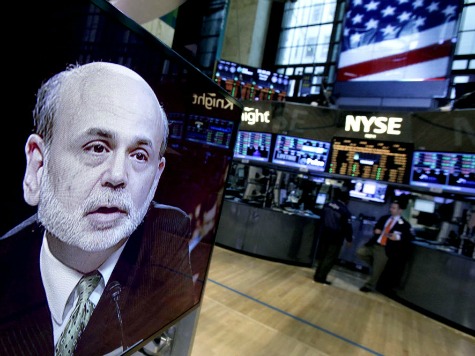
During the hearings last week regarding the nomination of Fed Vice Chairman Janet Yellen, the one thing you definitely heard nothing about was why the US government has not pursued fraud prosecutions against the officers and directors of the major US banks. The almost complete lack of prosecutions against the people most responsible for the 2008 subprime crisis is a glaring omission and one that is hurting America’s prospects for a recovery.
US District Judge Jed Rakoff recently commented on “Why Have No High Level Executives Been Prosecuted In Connection With The Financial Crisis?” This senior jurist, who has presided over several large financial litigations stemming from the subprime debt crisis, put the situation in context last week:
“I have no idea whether the financial crisis that is still causing so many of us so much pain and despondency was the product, in whole or in part, of fraudulent misconduct. But if it was — as various governmental authorities have asserted it was — then, the failure of the government to bring to justice those responsible for such colossal fraud bespeaks weaknesses in our prosecutorial system that need to be addressed.”
Rakoff talks about the tendency of US officials like former Treasury Secretary Timothy Geithner and Attorney General Eric Holder, who recently joined the private equity salon Warburg Pincus, to protect the officers and directors of large banks from prosecution under the rubrick of “too big to fail.” Geithner’s facile arguments were used to protect his political mentor, former Goldman Sachs CEO and Treasury Secretary Robert Rubin, from prosecution for malfeasance with respect to the failure of Citigroup. Rakoff makes no bones about how he feels regarding Attorney General Eric Holder:
“Attorney General Holder himself told Congress that ‘it does become difficult for us to prosecute them when we are hit with indications that if we do prosecute – if we do bring a criminal charge – it will have a negative impact on the national economy, perhaps even the world economy.’ To a federal judge, who takes an oath to apply the law equally to rich and to poor, this excuse — sometimes labeled the “too big to jail” excuse – is disturbing, frankly, in what it says about the Department’s apparent disregard for equality under the law.”
But one of the interesting aspects of Rakoff’s comments is that neither he nor most other informed observers really understand how the past errors and omissions of regulators prevent today’s prosecutors from pursuing the Robert Rubins of our world. The story begins, ironically, with the S&L crisis of the 1980s and former FDIC Chairman William Seidman (1921-2009), who is rightly seen as a great public servant.
In the 1980s, S&Ls got into trouble because the federal government started to dismantle the prohibitions on fraudulent transfers of assets by banks that dated back to the 1920s. The landmark 1925 Supreme Court decision authored by Louis Brandeis, Benedict v. Ratner, had slammed the door on fraudulent “pledges” of assets by banks but also stifled credit creation in the US for 50 years afterward. When Congress began to loosen the standard in the 1980s, Seidman called it “the biggest mistake in the history of government.”
After the S&L debacle, the rules on asset sales were tightened temporarily in 1997 – so much that it made it impossible for banks to sell financial assets. In a 2001 revision to the standard, attorney Fred Feldkamp notes in a draft book, the “FDIC adopted a safe harbor that, it later noted, gave a ‘bye’ on legal compliance for bank transfers to be reflected as sales” despite the fact that these transactions violated the standard set by the Supreme Court in Benedict v. Ratner.
From 2000 through September 2010, when the FDIC adopted new rules for asset sales, the largest commercial banks were given a “get out of jail free” card to commit acts of financial fraud with impunity. Transactions that were clearly “pledges” of assets were instead treated as “true sales,” allowing the largest banks to create tens of trillions of dollars’ worth of bad assets that cut US stock prices in half and nearly destroyed the global economy. Citigroup and other banks failed as a result and required a government rescue.
The changes made by the FDIC in 2010 to the rules for a “safe harbor” for asset securitizations, combined with the new rules put in place by the Financial Accounting Standards Board (“FASB”) regarding the transfer of financial assets, effectively make it impossible for commercial banks to conduct fraudulent asset sales. But unfortunately, the FDIC’s “safe harbor” rule also effectively makes it impossible to prosecute the officers and directors of the largest banks for acts of bank fraud committed between 2000 and the end of 2010. By waiving its right to challenge asset sales by banks, the FDIC also gave the officers, directors and attorneys working for these banks carte blanche in a legal sense to commit the worst acts of fraud in US history. Now you know why Lehman Brothers owned a federally insured bank.
The moral of the story is that acts of criminality like financial fraud are only possible in a free and democratic society. The roots of the subprime crisis of 2008 actually stretch all the way back to the 1980s S&L crisis, which itself was a political reaction against the draconian rules put in place in the US in the 1920s in response to the gigantic frauds of that era. Decisions like Benedict v. Ratner not only limited fraud but also restrained economic growth for decades afterwards. Finding a balance between regulation and economic freedom is a constant and continuing challenge for us all. Indeed, attorney’s for some of the largest US banks are already trying to undermine the new limits put in place by the FDIC and FASB in 2010. More on this in a future post, when we shall name names.

COMMENTS
Please let us know if you're having issues with commenting.